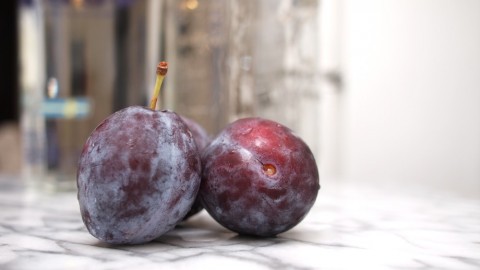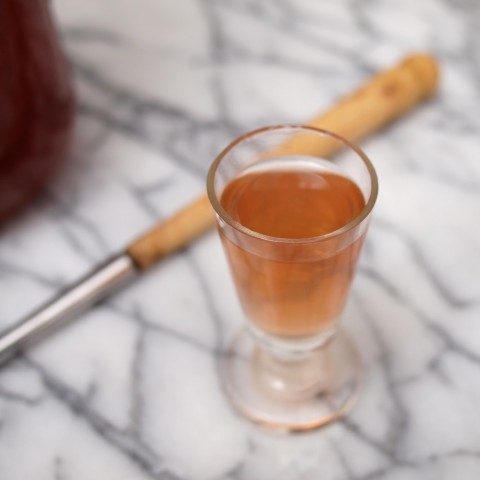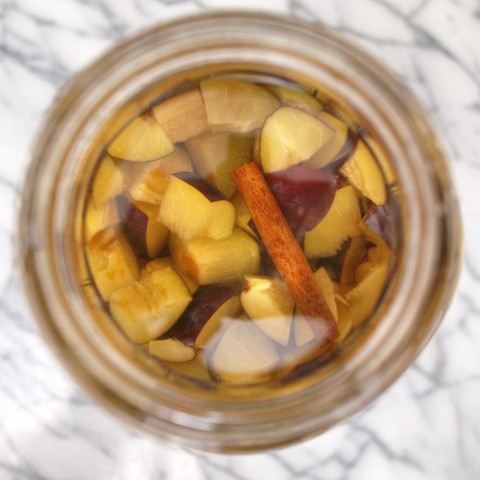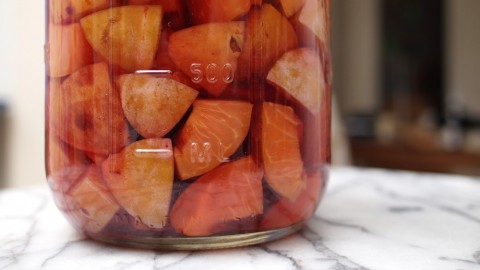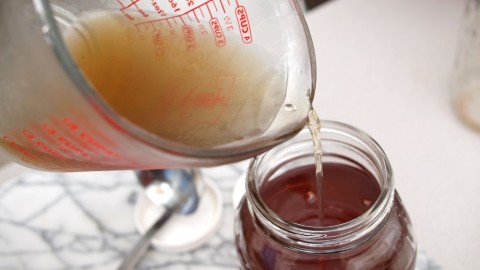I have a confession to make: in the past, my attitude toward folks who make liqueurs has sometimes edged more toward smug tolerance than genuine appreciation. Look at my science, I hear them exclaim to me, grinning enthusiastically. Then they put specimen jars full of off-colored liquid in my hands and encourage me to breath deeply.
That’s great, I reply, matching their tone — making all the appropriate noises and nods. I’m sure it’ll be delicious when it’s done!
But in my head, my reply is something else entirely. Inside, I want to add: Now you just go back to pretending to make alcohol, while I’m over here with my meads and my all-grain beers.
Fermentation, I want to add — now that’s real science!
To all of my liqueur-making friends who have received this treatment at my hands — whether you knew it or not at the time — you may consider this my apology. I have misunderstood, I think, the rationale behind liqueur-production, when I assumed it was a low-rent substitute for making meads, wines, and beers. But I think I begin to understand it now.
The difference in my thinking is summer. The difference in my thinking is that between the CSA, and the Farmer’s Market, and my not infrequent visits to the Reading Terminal Market, this season has seen a hefty quantity more fruit making its way into my house than I can bear.
What I did not understand before this summer is that there comes a point where you have made all the tarts, and all the crisps, and all the upside down cakes, and yet there’s still a stack of stone fruit so large it won’t all fit into the fridge. What I did not understand is that liqueur constitutes a sort of double act of preservation: of the fruit that would otherwise go bad; and of myself, who would otherwise drown in peaches, and apricots, and plums.
This liqueur — plum liqueur — is a product of that kind of preservation. At the height of summer, when I already had considerably more fruit than I could manage, I came across some beautiful Sicilian plums at our farmer’s market. I knew I shouldn’t take them home, but plums are my favorite, and they called out to me. I thought I would eat them out of hand, but then I didn’t.
So with more than a dozen of them staring at me with their taut purple skins, I did the only thing I could think of: I dropped them in vodka.
My feelings about liqueur are still deeply conflicted. Even as I have done three or four in the past few months, there is some part of me that derisively calls it alcoholic amateur hour.
But at the same time — I had a fruit problem, and now I don’t. And instead, what I have now is a delicious beverage that will ensure, this winter, that summer plums are never very far away.
8-10 Ripe Plums
5 cups Vodka, 80-Proof (it doesn’t have to be top-shelf. But it should have a neutral flavor)
3 cups Simple Syrup* (or less, plus filtered water, if you want your liqueur less sweet)
1 Cinnamon Stick
Wash, pit, and cube the plums, leaving the skins on (you’ll want skins to color the liqueur).
To a half-gallon mason jar, add the plums, the cinnamon stick, and the vodka. Close with a plastic lid (a metal one will corrode), and store in a dark, cool place for one to two months. You’ll find, during that time, that the plums will turn pale, and the liquid will turn purple.
At the end of that time, using a fine-mesh sieve, strain the mixture into a second half-gallon mason jar, being sure to squeeze the plums to get as much liquid as possible out. Add the three-cups of simple syrup (which should fill the mason jar to the very top), close tightly, and agitate to mix.
Store for at least two more weeks to allow the liqueur to mellow. Then serve in moderation. The final ABV of this liqueur should be around 25%.
*To make the simple syrup, boil 2 cups of water and 2 cups of granulated sugar, stirring until the sugar is dissolved. Then remove to a pourable container, and chill in the refrigerator.
